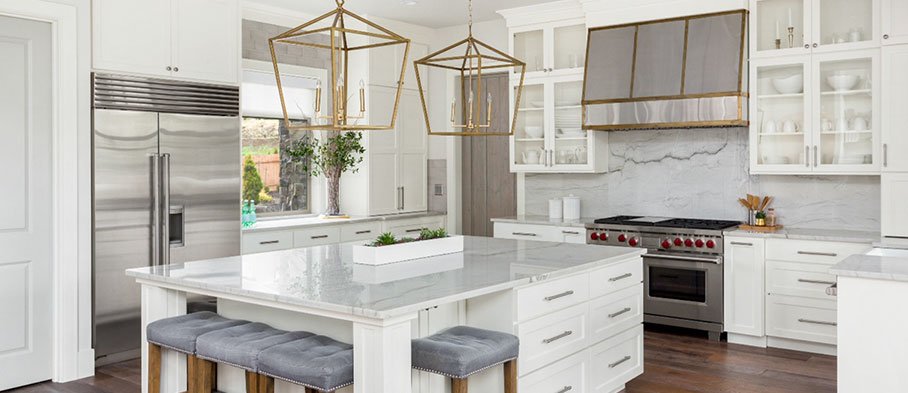
Cabinet Care
Cabinet Front Care
Cabinet fronts are made of finished hardwoods. With proper care, the beauty and utility of your cabinets will last for many years. Remove splashes and splatters promptly to avoid permanent stains.
Periodically, remove dust from cabinets with a soft lint-free cloth. The cloth may be slightly dampened with water or a spray-type dust remover. Wood and laminate cabinet surfaces may be polished once every few months with a high-quality, non-oil-based furniture polish.
Use of Products
Be sure to clean spills immediately. Use a clean cloth and mild soap if necessary. Wipe dry with a soft cloth. Do not use bleach, detergents, citrus or ammonia-based cleaners, steel wool, soap pads or abrasive cleaners on your cabinets. These harsh abrasives will mar the wood finish.
Additionally, the manufacturer recommends that you avoid the use of paste wax and polishes that contain silicone; the wax build-up is difficult to remove and will leave a residue that attracts dust.
The interior surfaces of the cabinets should also be cleaned periodically. There are several products available for your wood cleaning needs. See manufacturer recommendations for recommended cleaning products.
More Maintenance Tips
Minor scratches can be covered with a putty stick that matches the finish of your cabinets. Putty sticks can be purchased at paint or hardware stores.
Extra care should be taken that cabinet finishes are not exposed to heat. Appliances such as coffee makers and toasters can produce excessive heat, damaging the finish of your cabinets.
The wood in your cabinets is a natural product. It is subject to drying and can warp. This could cause drawers to stick and prevent doors from closing properly. Over time, it is normal to have some separation between countertops and walls. Caulking should be used to seal water out of places where it can cause damage and separation.
Ultraviolet light rays in natural sunlight may affect the appearance of your cabinets over time. The finish on your cabinetry will not change. Still, depending on its natural characteristics, the amount and direction of light exposure, and the portion of the cabinet that receives light, the wood may change.



